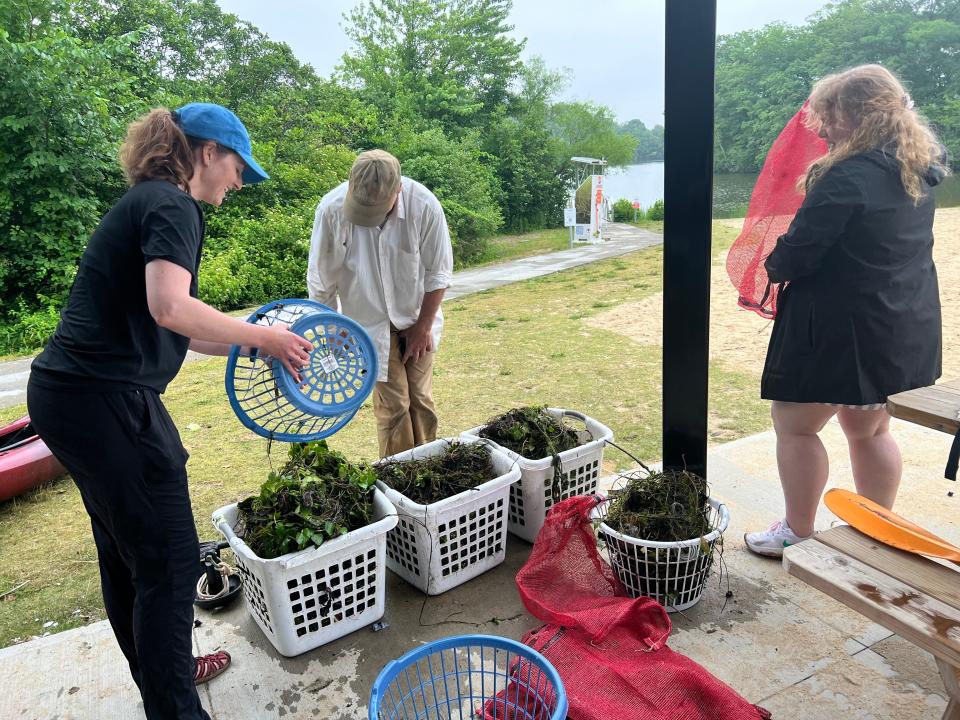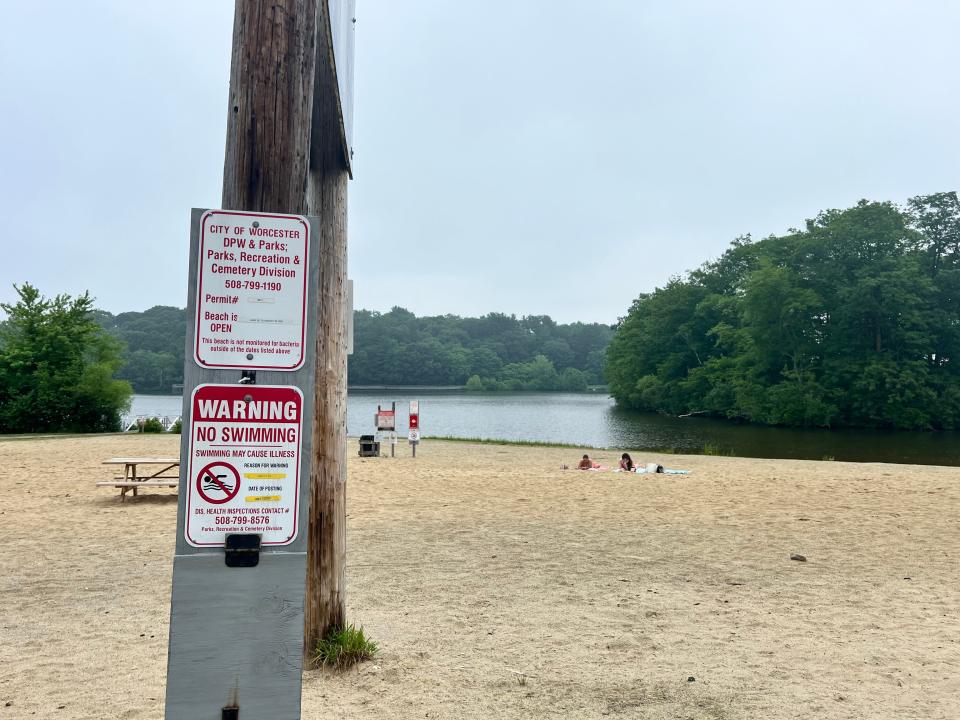Volunteers pull invasive water chestnut plants from water at Coes Reservoir
WORCESTER — A group of volunteers paddled in canoes and kayaks in Coes Reservoir Saturday morning, pulling invasive water chestnuts from the water.

The southern part of Coes Reservoir has scattered plants along the shoreline and, according to the city, the most effective technique to eradicate those plants is by hand. Water chestnuts are an invasive aquatic plant species that impacts lakes and native species.
Worcester Lakes and Ponds Coordinator Katie Liming said the city's water chestnuts reproduce through seeds. One seed can produce multiple plants and the seeds can live at the bottom of lakes as long as eight to 12 years.
"For the past eight years the city's been working on removing water chestnuts through various methods," Liming said. "(Water chestnuts) can expand very quickly and cover a significant portion of the lake's surface."
Dale Wickenheiser of the Tatnuck Brook Water Association has been volunteering to remove water chestnuts for many years, he said. He volunteers because he believes it is important to keep bodies of water in the area clean.
"I live close by. We use this pond and would like to see it be kept clean for everybody," Wickenheiser said. "I have the ability to do something about it and help."
Wickenheiser said while this initiative is helpful and important, he wishes the city could allow swimming and other recreational activities at the bodies of water they clean up.
"The city spends a lot of money a year to take care of blue spaces," Wickenheiser said. "It's really appreciated."
Wickenheiser pointed out two signs at Coes Reservoir, one saying "No swimming" and another "Swim at your own risk." The signs are conflicting, he said.

"We're spending so much money to clean and do this kind of work, to what ends?" Wickenheiser said. "You still wouldn't be allowed to use this water."
Tom Matthews, Media and Public Relations Administrator for the City of Worcester, said swimming is allowed. All beaches and aquatic facilities are to open July 1.
According to the City of Worcester swimming is allowed, however beach and aquatic facilities do not officially open and will not be staffed with lifeguards until July 1.
Water chestnuts are easy to spot, but they are not supposed to be in Coes Reservoir. The water chestnut typically gets into bodies of water by accident, sometimes from animals, other times from people carrying seeds in on their boots or boat trailers.
The city's lakes and ponds program monitors, manages and promotes Worcester's bodies of water in conjunction with the state, watershed groups and other local organizations to identify and remediate threats to the quality of lakes and ponds.
"We were able to use volunteers to take care of all of it, which is really exciting," Liming said. "For areas like this, the turnout was great. We were able to tackle everything."
This article originally appeared on Telegram & Gazette: Volunteers remove invasive species from Coes Reservoir

